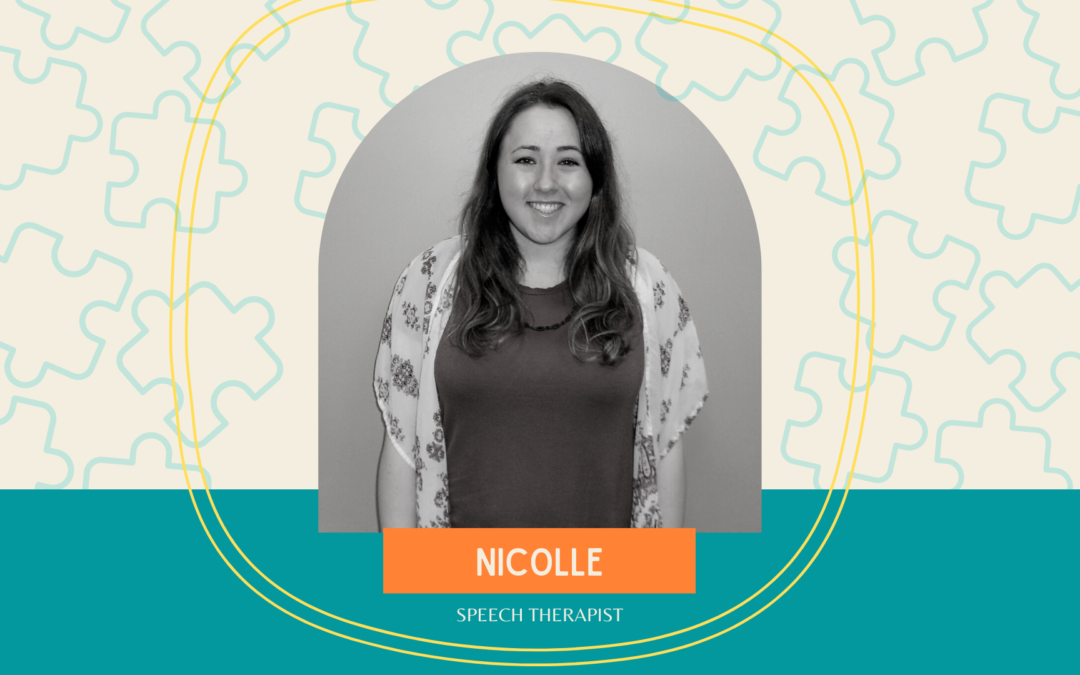Hi there! My name is Nicolle and I am the Minnetonka center’s speech therapist. In addition to my speech therapy background, I also have experience working as a behavior therapist for Partners in Excellence. Today I want to share how families can look to their daily routines for opportunities to target speech and language goals consistently, effectively, and in an approachable way.
All families have routines that involve their children: getting dressed, eating meals, bathing, etc. Routines are recurring events that are predictable and meaningful to everyday life – which makes them the perfect place to slip in some speech and language practice! Brains love repetition, and bringing learning opportunities to a child’s natural environment makes the lesson even more powerful.
Routines contain an abundance of opportunities to teach children functional communication skills across all ages and abilities, and research supports the effectiveness of using routine activities to target speech and language. Let us look at two examples of how families can make the most of their child’s routines, the first being a fictional client named Marie.
Marie’s speech therapist recommends that her parents target two-words phrases with her, but with Marie’s other siblings to look after and dinner needing to be prepared, her parents often forget to challenge Marie to lengthen her phrases over the course of hectic weekday evenings – especially when she can get her point across with single words just fine. Marie loves bath time, and so her parents decide to use the expected steps in this routine to their advantage for targeting two-word phrases. They agree to have Marie request “water on” at the start of the bath, “ducky in” to get her favorite bath toy, and “dry hair” when it is time to turn the hair dryer on. At first, they must model these phrases for Marie to copy them, but over time Marie begins to learn what parts of her routine require what phrases to communicate her wants and needs, and soon she starts to say some of these phrases on her own!
Another fictional client, Billy, is working on making the “t” sound at the beginning of words. Billy has a story read to him every night before bed, and so his father commits to using time to have Billy practice saying his “t” sound every time they come across a word that starts with it. In the mornings, Billy’s mother works on having Billy practice his sound while brushing his teeth. She knows that the phrase “It’s time to brush” has two words that start with his target sound, as do the words “teeth, tooth, toothpaste” and “toothbrush.” Now Billy has set times to practice his sound twice every day!
What I love about routines-based intervention is how family-friendly it is. It can be daunting to plan a unique activity to target your child’s speech and language goals, and easy to find the bustle of everyday life distracting from your intentions to prioritize targeting communication. If you and your family commit to incorporating regular practice into several daily routines, you may find that a few daily moments of focused speech and language practice can foster growth that goes a long way! Reach out to your child’s speech therapist for personalized suggestions of how your family can apply these tips.
Sources
Jennings, Danielle, et al. “Using Routines-Based Interventions in Early Childhood Special Education.” Dimensions of Early Childhood, vol. 40, no. No 2, 2012, pp. 13–22., www.wvsha.org/wp-content/uploads/events-manager-uploads/session-handouts/Handout%20Preschool%20Language%202.pdf.


Recent Comments